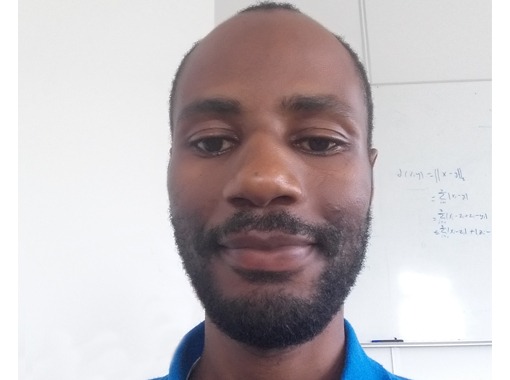Doctoral defence in Ecological modelling - Vianny Natugonza

Live stream: https://livestream.com/hi/viannynatugonza
Ph.D. student: Vianny Natugonza
Dissertation title: A comparative analysis of ecosystem models of Lake Victoria (East Africa) to understand the effect of complexity and data uncertainty on policy evaluations
Opponents: Dr. Johanna J. Heymans, Professor at the European Marine Board, Belgium
Dr. Ian G. Cowx, Professor at the University of Hull, UK
Advisor: Dr. Gunnar Stefánsson, Professor at the Faculty of Physical Sciences, University of Iceland
Doctoral committee: Dr. Erla Sturludóttir, Lector at the Agricultural University of Iceland
Dr. Chrispine Nyamweya, Research Scientist at the Kenya Marine and Fisheries Research Institute (KMFRI), Kenya
Dr. Tumi Tómasson, Senior advisor at UNESCO-Fisheries Training Programme, Iceland
Chair of Ceremony: Dr. Oddur Ingólfsson, Professor and the Head of the Faculty of Physical Sciences, University of Iceland
Abstract:
The advent of ecosystem-based fisheries management (EBFM) in recent years has expanded the scope of fisheries management, where policies are aimed not only at maximizing production (or biological yield) but also maintaining an optimal balance between socio-economic and conservation objectives when utilizing aquatic living resources. Ecosystem models help to assimilate diverse information on the drivers of ecosystem change, thereby providing integrated assessment and advice that is needed for EBFM. Different ecosystem models, however, often provide different predictions. This uncertainty is one of the major challenges impeding their use in EBFM. This study aims to explore the effect of model complexity and data uncertainty on policy evaluations, which could impact advice for EBFM. This objective is addressed in six papers.
Paper I examines the application of ecosystem modelling approaches, mainly Ecopath with Ecosim (EwE) and Atlantis, to the African Great Lakes (AGL). The aim is to understand the progress of ecosystem modelling of tropical inland fisheries, and the implication for fisheries research and management. Results show that ecosystem modelling is not an active field of research on the African inland fisheries, implying that management mostly relies on single-species approaches.
Paper II describes the development of an Ecopath model of Lake Victoria, representing present-day conditions (2014), and reparameterization of two existing historical Ecopath models, representing conditions in the 1970s and 1980s. The aim is to explore the evolution of the food web amid perturbations, particularly species introductions. Results show the present food web to be simple, with low trophic connectivity and high biomass cycling, suggesting that the trophic structure has not recovered, especially at a functional group level, after the disruptions during the 1980s. The food web is currently composed of new energy pathways and trophic groups, associated with species/groups that have undergone ecological and morphological changes to fit in the new environment, suggesting that the lake may never recover to its former state.
Paper III compares a historical EwE model, fitted to time series data, with a present-day model, assuming equilibrium conditions, to understand the reliability of non-fitted models in terms of predicting consequences of alternative management strategies. The two model types give different predictions, but those differences can be lessened by adjusting the rates of biomass change in the present-day EwE model to reflect biomass trends near the model’s initialization year.
Paper IV compares EwE and Atlantis models to understand how model structure, complexity, and assumptions affect policy evaluations. While large differences are observed in model predictions at the functional group level, the models give similar qualitative results. This finding illustrates the capacity of structurally-distinct ecosystem models to provide sound qualitative advice that is needed for EBFM.
Paper V examines socio-ecological trade-offs between management objectives using EwE and Atlantis modelling frameworks. The aim is to understand the relative risks and benefits of different management objectives in a fishery with limited livelihood options. Results show profit maximization to be more compatible with conservation objectives than is the maximization of catch (or employment). However, maximizing economic benefits, while maintaining ecosystem structure, would require a reduction in fishing effort in every fishing fleet/sector. This finding underscores the importance of identifying fishery objectives and preparing for the associated trade-offs, considering that achieving multiple objectives is unlikely.
Paper VI examines the spatial and temporal variation in fishing patterns and fishing pressure in relation to the biological productivity of individual harvested fish species/groups. Results show exploitation to be skewed to low productive groups at high TL, which is consistent with the changes in species composition and contraction of individual sizes of the main commercial fish species, for example, Nile perch (Lates niloticus) and Nile tilapia (Oreochromis niloticus). However, the transition to a balanced harvest (BH) strategy, where fishing pressure is proportional to the biological productivity of species, requires further investigations.
In conclusion, ecosystem models are invaluable quantitative decision support tools that can aid the implementation of EBFM, but model diversity ought to be embraced to account for biases and limitations in individual models. The present work focuses more on fishing scenarios concerning well-documented species, for example, Nile perch (top predator) and haplochromines (vital prey species). Additional multimodel simulations would be useful to compare model behaviour using fishing pressure scenarios on other species/groups, both individually and in combination with other groups.
About the doctoral candidate:
Vianny Natugonza, born in 1987, was raised in Kitagwenda district, Western Uganda. He went to Makerere University, Kampala, where he graduated with a BSc degree in Fisheries and Aquaculture in 2011 and MSc degree in Zoology in 2015. He went to Belgium in 2015 for further training in fish taxonomy at the Royal Museum for Central Africa and later moved to Iceland for training in Fish Stock Assessment at the Marine research Institute and University of Akureyri. In 2017 he started his PhD studies at the University. In Uganda, he is employed by the National Fisheries Resources Research Institute and lives in Jinja with his wife, Sylivia Tukwasibwe, and two children, Esther Lwamubito and Adrian Ampurira Lubito.
Vianny Natugonza



